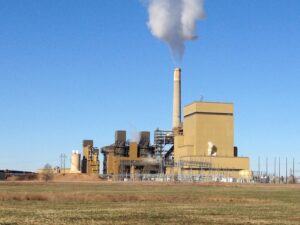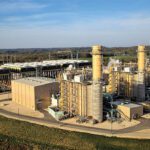Those enormous amounts of water used in hydraulic fracturing may not be the environmental headache they appear to be. That’s because of the downstream effects of more abundant, less expensive natural gas unlocked by the process, known as “fracking,” according to a new study from the Bureau of Economic Geology (BEG) at the University of Texas (UT).
A typical fracking operation can consume millions of gallons of water. Texas has been struggling with an ongoing drought for the past several years, with several areas of the state experiencing severe water shortages, including some where hydraulic fracturing is being conducted. With the state’s natural gas boom coinciding with this drought—2011 was the driest year ever in Texas—the increased demand for water for natural gas development has raised concerns among environmentalists, farmers, and state officials.
But the study found that far from exacerbating the state’s water shortage, fracking is likely saving Texas substantial amounts of water. That’s because the shift toward natural gas-fired generation and away from coal, a development made possible by the glut of shale gas, has greatly reduced water consumption in the power sector. “The amount of water saved by using [combined cycle plants] rather than coal steam turbine plants is about 25 to 50 times the amount of water required to hydraulically fracture and produce the natural gas used to generate this electricity,” the study found.
“The bottom line,” said lead author Bridget Scanlon, senior research scientist at the BEG, in a statement accompanying the study, “is that hydraulic fracturing, by boosting natural gas production and moving the state from water-intensive coal technologies, makes our electric power system more drought resilient.”
The researchers collected 2011 water use data for all 423 of Texas’s power plants from the Energy Information Administration and state agencies, as well as other data. Most of the new generation capacity built in Texas since the 1990s has been natural gas combined cycle, which uses about a third as much water as the coal capacity it has replaced.
Though the study considered only data from Texas, the researchers believe the results should be applicable to other regions in the U.S. because water consumption rates in the power sector are generally similar. They cautioned, however, that the study considered statewide effects and that heavy use of fracking in water-challenged areas could still strain local supplies, especially since the downstream benefits might well be realized elsewhere.
This latest work from the BEG is unlikely to quell concern among environmental groups, which have denounced previous studies on fracking at UT because of researchers’ connections to the natural gas industry. The study here was funded by the university and the State of Texas Advanced Resource Recovery program, an initiative managed by the BEG to help increase the efficiency of oil and gas fields on state land.
The study was published Dec. 20 in the journal Environmental Research Letters.
—Thomas W. Overton, JD, gas technology editor (@thomas_overton, @POWERmagazine)
Splash photo courtesy: Jason Tessmann/flickr









